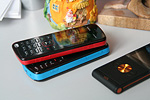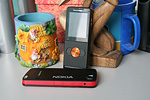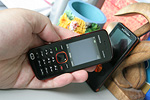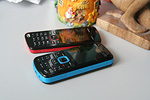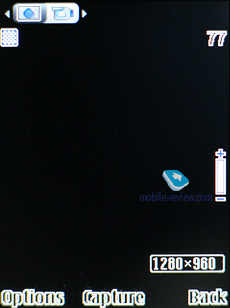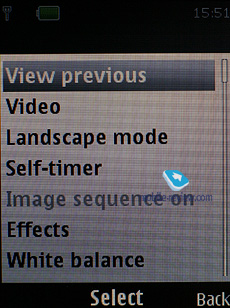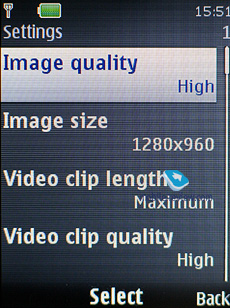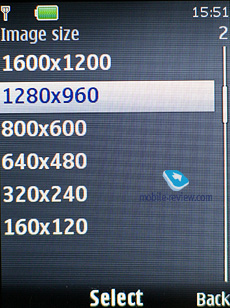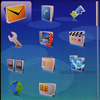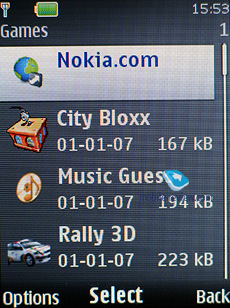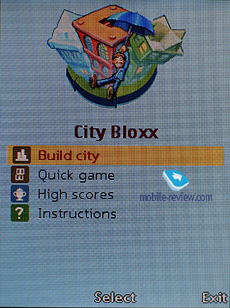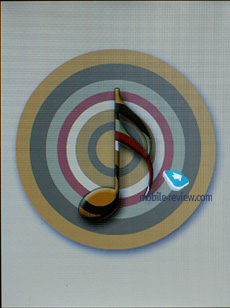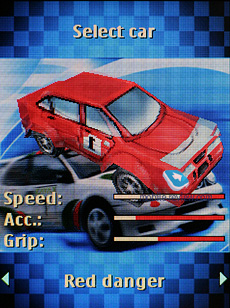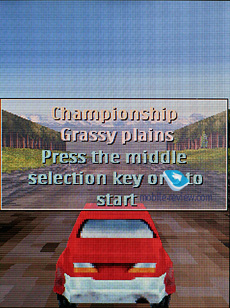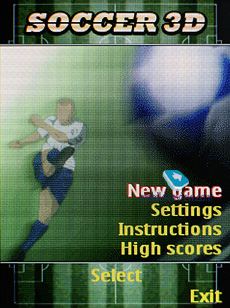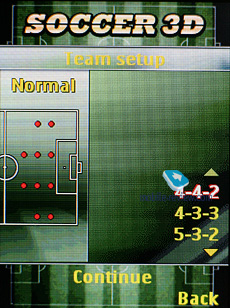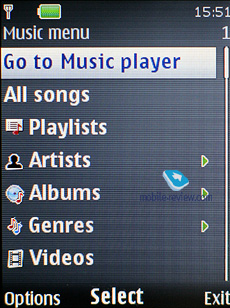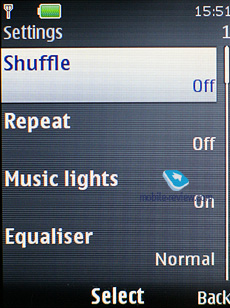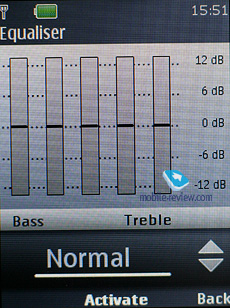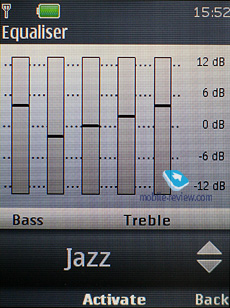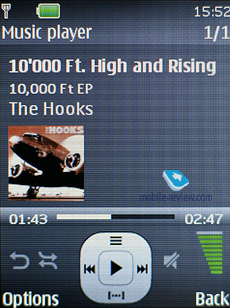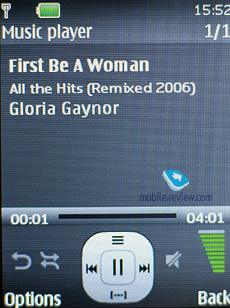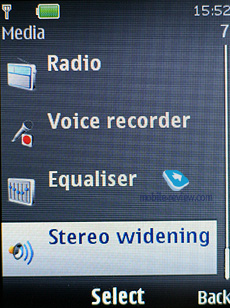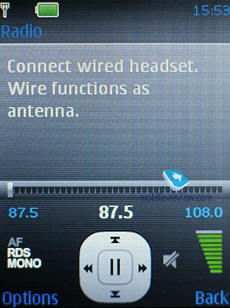|
|
Review of GSM-handset Nokia 5220 XpressMusic
Live photos of Nokia 5220 XpressMusic
Table of contents:
- Positioning
- Design, size, controls
- Display
- Keypad
- Battery
- Memory, Memory cards
- Peformance
- USB, Bluetooth
- Camera
- Menu, themes, games
- Music department
- Impressions
Sales package:
- Handset
- Battery (BL-5CT)
- Charger (AC-3, AC-6C for China)
- 512 Mb microSD memory card
- Wired stereo-headset (HS-48)
- User Guide
- Software CD
- Strap
Positioning
Seems like Nokia couldn’t be more serious about music than it is today – while their first music-centric offerings didn’t have dedicated sound processors and couldn’t boast dazzling audio performances, its contemporary range is all different. Building upon last year’s experience, the maker has stepped up its efforts on this front. What’s more, Nokia actually managers to bring in various solutions that have not only music smarts, but also design and extra feats. So far, S40 has been the basement for all such products, and the most affordable music-minded solutions will stick to this platform down the road as well.
As far as the year of 2007 goes, the most affordable music-savvy device was, discounting the maker’s already long in the tooth offerings, the Nokia 5310 where slim was definitely in, along with very few extras, yet music-minded circuits and good audio quality. It may sound strange, but the demand has exceeded Nokia’s initial expectations, and while this upswing hasn’t turned the 5310 into a best selling device, it’s no longer some average buzzer sales-wise. In December 2007 it went for around 230 Euros, and almost half a year after its launch date the Finnish manufacturer bursts out the Nokia 5220, which is the good old 5310 but in a different wrapping, for just 160 Euro. In my opinion they have hit the nail on the head with this positioning – no only do they roll out a follow-up to their old phone, but also take it one step further with a new design, targeting it at the youth.


The factor they deemed most important when creating the Nokia 5220 XpressMusic was design, which is no surprise considering that originally it was schemed as a counter to Sony Ericsson’s Walkman series. Quirky casing lines and unparalleled design – you can almost feel an uncanny similarity of this motto that the one employed by Sony Ericsson. Nokia has never encouraged fancy designs for its mass-market solutions – for all design-conscious consumers they had the fashion-savvy line-up. As a rule they offered “lackluster” designs for their lower-tier solutions that were little to no different from the pack of other phones out there. Such a dramatic change of course is due not only to the fact that Nokia now looks to compete with some specific products, but also their new team of designers that have assumed control of whole product ranges over there. Apparently, these changes are for the best – they keep churning out unique and catchy designs, which is a great thing.





There is nothing special about the Nokia 5220 XpressMusic’s positioning – young music aficionados who don’t want to pay a premium for decent audio quality. Basically, the advent of such products bodes ill for mid-tier dedicated MP3-players, as things stand these days they are all but doomed.

Back to the table of contents >>>
Design, size, controls
Surprisingly, the Nokia 5220 is more about design than features – it’s seemingly standard candybar shapes have been stretched and both ends are curved, lending it a very distinctive look that can’t be mistaken for anything else. Whatever color option you pick, it will sport a glossy black face and colored side-mounted stripes. The 5220 comes in a choice of three colors – red, green and blue. The green edition has the back cover decked out in white plastic, whereas on all other variants it’s all black.

Video, looks (wmv, 19,1 mb) >>>
The phone’s rear is rubberized and patterned at that, so the 5220 won’t slip out of your hand, plus it lends the handset a very nice feel in the hand. It also feels robust, palm-friendly and doesn’t creak even when you grasp it. The handset’s front fascia features holes for a carrying strap (comes packaged with the phone). By the way, it’s pretty amusing to see how some online resources can twist the facts found in press-releases – some time ago there was an avalanche of news articles that the 5220 in fact had a built-in strap that could be rolled in and out as you pleased. But all this has nothing to do with reality.




The phone measures 108x43.5x10.5 mm and tips our scales at just 78 grams, which is fairly great, I suppose I don’t need to say how easy it is to carry the 5220 around. All in all, we weren’t disappointed by its dimensions and feel.






Since it’s a music-minded phone, it has a 3.5 mm jack on top, although it’s not covered by a flap. Sitting right next to it is the battery cover latch – should you need to get to the 5220’s battery the only way to go is press it and pull the lid up. Also on top is the microUSB socket, sealed with a plastic stub.

Perched on the left-hand side are dedicated music controls, and it feels like they are mounted right on the edge. But they aren’t – all keys are placed on the left spine, whereas these are their captions that are nestled on the edge. Surprisingly, they all have LEDs underneath, which prove to be of no real use – it’s impossible to overlook them even in bright light. Further up on the left is the charger socket (2 mm).



On the right there are volume controls, further down is the memory card slot covered by a plastic seal. The rear features the camera lens and a LED along with two loudspeakers. As a rule two speakers are better than one, but as far as the 5220 is concerned, the speaker count doesn’t make any difference. They are small, crammed together and sound somewhat muffled, so there is no stereo-effect whatsoever.

Back to the table of contents >>>
Display
The 5220’s display sports 2-inch diagonal and a resolution of 240x320 pixels (31x41 mm), showing up to 262 K colors. All this results in a bright and vibrant picture. This model is actually notable for its pretty much decent display, standing in one line with today’s offerings from Sony Ericsson, like the Sony Ericsson W580i.
The display remains readable in the sun (TFT), which is mainly due to the tinted protective layer. However, even this screen starts glaring heavy on some occasions, so you will need to find the right angle. Regrettably, given the display’s relatively tiny diagonal, it is not very convenient to use outdoors, which is also true of other phones with 2-inch screens onboard.



The display accommodates up to 9 text and 3 services lines. The font size won’t give you any trouble; furthermore, you can manually adjust its size for some modes and applications.
Back to the table of contents >>>
Keypad
The 5220’s keypad is well-sized and well spaced out, plus all buttons are quite soft; however it may still turn out to inconvenient for people with big hands, but for the rest it should handle just fine. There is nothing to write home about here, but also we can’t find any crucial drawbacks in the 5220’s keypad. Circling the navigation button is the LED color-keyed to the casing color (red, blue or green).


All buttons are lit in relatively bright white, which is visible in most environments.

Back to the table of contents >>>
Battery
The handset comes with a new battery type – the BL-5CT, which is a 1020 mAh (against the Nokia 5310’s 860 mAh) Li-Ion cell. As the maker claims, it is good for up to 5.25 hours of talk time and 406 hours of standby. In Moscow, our 5220 lasted around 3 days with 5 hours of music, 1,5 hours of calls and very few SMS. So most users may expect it to stay online about 3-4 days with their usage patterns. The longest music playback time we managed to squeeze out of it (native headphones, max volume settings was 23 hours 50 minutes (radio module enabled). It takes the 5220 1 hour and 50 minutes to charge from empty to full.
The battery is one of this model’s fortes, and this definitely can’t be overlooked.

Back to the table of contents >>>
Memory, Memory cards
The handset ships with around 30 Mb of storage that can be managed by the user. The microSD memory expansion slot is housed on the right-hand spine, and on top of that, it allows you to swap cards on the fly. The maximum memory card size supported by the device is unlimited – we plugged in our 8 Gb unit and experience absolutely no problems with it.

Back to the table of contents >>>
Peformance
JAR-file size limit – 1 Mb, heap size – up to 2 Mb. The 5220 is no different from its platform’s average results performance wise.
Back to the table of contents >>>
USB, Bluetooth
USB. The Nokia 5220 comes with the microUSB socket, housed on the top edge of the phone. This socket is used for plugging in a data cable (the phone starts charging up), headset or charger.
The vendor says that the handset supports USB 2.0, and it does indeed, in USB Mass Storage mode the connection via USB cable puts up medium data transfer speed which makes up about 500-600 Kb/s.
Upon successful connection you can pick one of the following modes: USB Mass Storage, PC Studio, or modem mode. There is also support for MTP mode.
Bluetooth. The handset comes with EDR-enabled Bluetooth 2.0. The following profiles are supported:
- Dial-Up Networking Profile
- Generic Access Profile
- Generic Object Exchange Profile
- Object Push Profile
- Serial Port Profile
- Handsfree Profile
- Headset Profile
- Synchronization Profile
- Basic Image Profile
- File Transfer Profile
- HID (host) Profile
- Stereo Advanced Audio Distribution Profile
- Advanced Audio/Video Remote Conference Profile
The Bluetooth implementation is, as always though, nothing to complain about, we encountered no issues with handling this type of connections. The stereo-headset also works fine. The 5220’s Bluetooth speed tops out at 170-180 Kb/s.
Back to the table of contents >>>
Camera
This handset has 2mpx camera (CMOS) which is not that much by today’s standards, but it is still pretty much sufficient for a mid-tier offering. Nokia has decided not to bet on the camera part, it is more of an optional feature here. This is why camera’s module picked for 5220 is one of the cheapest units out there, and provides average quality.

The following resolutions are supported:
- 1600x1200
- 1280x960
- 800x600
- 640x480
- 320x240
- 160x120.
Two lower resolutions were added for creating photos that would fit as wallpapers for display. Three JPEG compression types are supported: basic, normal, high. Considering the fact that photos do not blow your imagination away, it is better to go for the top quality, it won’t get any worse after all.
The shutter sound can be disabled, also there is a 4x digital zoom, but there is no reason to use it. You can save photos in the internal memory or on the memory card.
Some effects can be applied to the already made photos, should they be used initially – it is up to you to decide. Such effects as False Colours, Greyscale, Sepia, Negative, Solarize are available.
For those who love to shoot a lot of photos at once, there is special mode for you – camera makes up to 3 shots at a time, all settings remain similar to those selected for the single shot mode, including the resolution. There is an auto-timer for self-shots.
 |
 |
| (+) maximize, 960õ1280, JPEG |
(+) maximize, 960õ1280, JPEG |
 |
 |
| (+) maximize, 960õ1280, JPEG |
(+) maximize, 960õ1280, JPEG |
 |
 |
| (+) maximize, 960õ1280, JPEG |
(+) maximize, 960õ1280, JPEG |
 |
 |
| (+) maximize, 960õ1280, JPEG |
(+) maximize, 960õ1280, JPEG |
 |
 |
| (+) maximize, 960õ1280, JPEG |
(+) maximize, 960õ1280, JPEG |
Video. The handset allows recording video in 3GP format, available resolution – 128x96 pixels, or 176x144 pixels. There are three recording quality settings available. You can limit a recording’s length, but it also can be unlimited, so you will keep recording until the memory runs out (memory card or internal memory). Effects can be applied for video just as they can be applied for photos, they are all the same.
Back to the table of contents >>>
Menu, themes, games
The handset runs S40 5th edition, that’s why we are going to skip our routine review of the standard features, such as phonebook, organizer, menu layout etc. Learn more about them in our dedicated write-up:
The handset offers 5 different themes that are nothing of this world, though, and don’t even change the way the menu looks.
The handset comes preinstalled with an array of games – City Bloxx, Snake III, Music Guess, Rally 3D, Soccer 3D, Sudoku.
The Applications section includes such standard functions like World Time, Converter, Widgets installer, and Nokia’s catalogue for uploading new apps. Also onboard is Nokia Search that allows the user to look for information and images online – every region (customizable in the settings menu) has a hardwired search engine used for these purposes.
Opera Mini needs no introduction, it comes preinstalled with most S40-powered models.
Nokia Sensor will appeal to the youth.
A new utility spotted on the 5220 is Wallpaper Creator.
Another pack of applications found in the 5220 that we haven’t seen before contains Windows Live Messenger and QQ (an ICQ-client).
Back to the table of contents >>>
Music department
The 5220 hasn’t undergone any major changes since the Nokia 5310; it still packs in two skins, but they are quite enough already. All in all, the 5220 is no different from other models running the S40 5th edition – its player matches them spec-wise. And we are not going to examine it all over again in this write-up, for you can always learn more about it in our review of this platform. The side-mounted keys mean that you are always a click away from launching the music player and jumping back and forth between your tracks. Probably, this is one of the reasons why they omitted a remote control from the 5220’s sales package.
The sonic experience delivered by the phone is pretty good, thanks to its built-in AIC33 chip, the one found in other latest and greatest XpressMusic offerings. The volume you get in headphones is also pretty much sufficient, and generally the 5220 is a potent music-minded device, although, from my subjective point of view, its sound could be a tad deeper at times. While it can’t stand up to the Nokia N91 or the Samsung i450, the 5220’s sound quality is okay, being in line with Samsug’s Beatz Range and ahead of Sony Ericsson’s Walkman phones (not for all genres, but it does have an edge there).
Here is what our RMAA tests told us about the Nokia 5220:
Alexander Dembovsky’s take on the Nokia 5220:
The Nokia 5220 turned out to be a quite good performer in our audio tests, although that’s exactly how we’d expected a music-centric handset to fare. Among its nice and welcome feats are a standard 3.5 mm headphone socket and pretty high output signal strength. These two factors make for a wider selection of earphones you can use with the 5220, without bothering about compromises.
The 5220’s frequency response graph is fairly good too – it’s even better than most dedicated music players; however it has its own flaws, the highs sound somewhat muffled. Other than that, both the its sound feels and results in our RMAA tests are solid.
General performance
| Frequency response (from 40 Hz to 15 kHz), dB: |
+0.17, -1.50 | Average |
| Noise level, dB (A): |
-88.5 | Good |
| Dynamic range, dB (A): |
87.6 | Good |
| THD, %: |
0.011 | Good |
| IMD, %: |
0.331 | Average |
| Stereo crosstalk, dB: |
-73.3 | Good |
| Intermodulation at 10 kHz, %: |
0.123 | Average |
General performance: Good
Frequency response

Noise level

We managed to squeeze almost full 24 hours of music out of the 5220, which is all thanks to its updated hardware and increased battery capacity. As far as battery life goes, this phone is as close to the limit as it can get, and the truth is, there are no better performers on this front at the moment. What’s more, it manages to maintain relatively subtle dimensions and wafer-thin profile, which is quite something.
Speaking of the 5220’s performance as a juke box (speakerphone mode), it’s middling, actually the phone could use two loudspeakers, but since there is only one its power proves to be insufficient. For truth’s sake let us note that the senior offering, the Nokia 5230, doesn’t fare well in this department either.
Back to the table of contents >>>
Impressions
The volume presented by 64-chord ring tones is average, overall the 5220 is not the loudest device around, so we experienced some difficulties with hearing it in the street, and it lacked volume indoors as well. Actually, this is our major gripe with the handset. In terms of reception quality, the phone is flawless. The vibro alert is middling strength-wise, but you will feel the phone’s vibration while it is in your pocket.
Given how light the 5220’s price tag is at just 160 Euro, it won’t have direct rivals on its release day. Basically, no other maker offers candybar-styled music-minded phones – folders seem to be all the rage nowadays. Probably, although it’s pretty far-fetched, the Sony Ericsson W350i may be lined up as a rival to the 5220, but they are very different, but still play in the same price bracket and have their own appeal. By and large, they are both pretty good ways to go if you are in the market for a music-playing handset; going for Nokia is superior sound quality, better functionality and a wider array of preinstalled applications and games.
Nokia has hit the nail on the head with its new 5220 XpressMusic, primarily thanks to its design. It’s a superb restyling of the Nokia 5310 that covers up its roots well enough.
Related links:
Back to the table of contents >>>
Eldar Murtazin ([email protected])
Translated by Oleg Kononosov ([email protected])
Published — 02 June 2008
Have something to add?! Write us... [email protected]
|
News:
[ 31-07 16:21 ]Sir Jony Ive: Apple Isn't In It For The Money
[ 31-07 13:34 ]Video: Nokia Designer Interviews
[ 31-07 13:10 ]RIM To Layoff 3,000 More Employees
[ 30-07 20:59 ]Video: iPhone 5 Housing Shown Off
[ 30-07 19:12 ]Android Fortunes Decline In U.S.
[ 25-07 16:18 ]Why Apple Is Suing Samsung?
[ 25-07 15:53 ]A Few Choice Quotes About Apple ... By Samsung
[ 23-07 20:25 ]Russian iOS Hacker Calls It A Day
[ 23-07 17:40 ]Video: It's Still Not Out, But Galaxy Note 10.1 Gets An Ad
[ 19-07 19:10 ]Another Loss For Nokia: $1 Billion Down In Q2
[ 19-07 17:22 ]British Judge Orders Apple To Run Ads Saying Samsung Did Not Copy Them
[ 19-07 16:57 ]iPhone 5 To Feature Nano-SIM Cards
[ 18-07 14:20 ]What The iPad Could Have Looked Like ...
[ 18-07 13:25 ]App Store Hack Is Still Going Strong Despite Apple's Best Efforts
[ 13-07 12:34 ]Infographic: The (Hypothetical) Sale Of RIM
[ 13-07 11:10 ]Video: iPhone Hacker Makes In-App Purchases Free
[ 12-07 19:50 ]iPhone 5 Images Leak Again
[ 12-07 17:51 ]Android Takes 50%+ Of U.S. And Europe
[ 11-07 16:02 ]Apple Involved In 60% Of Patent Suits
[ 11-07 13:14 ]Video: Kindle Fire Gets A Jelly Bean
Subscribe
|
